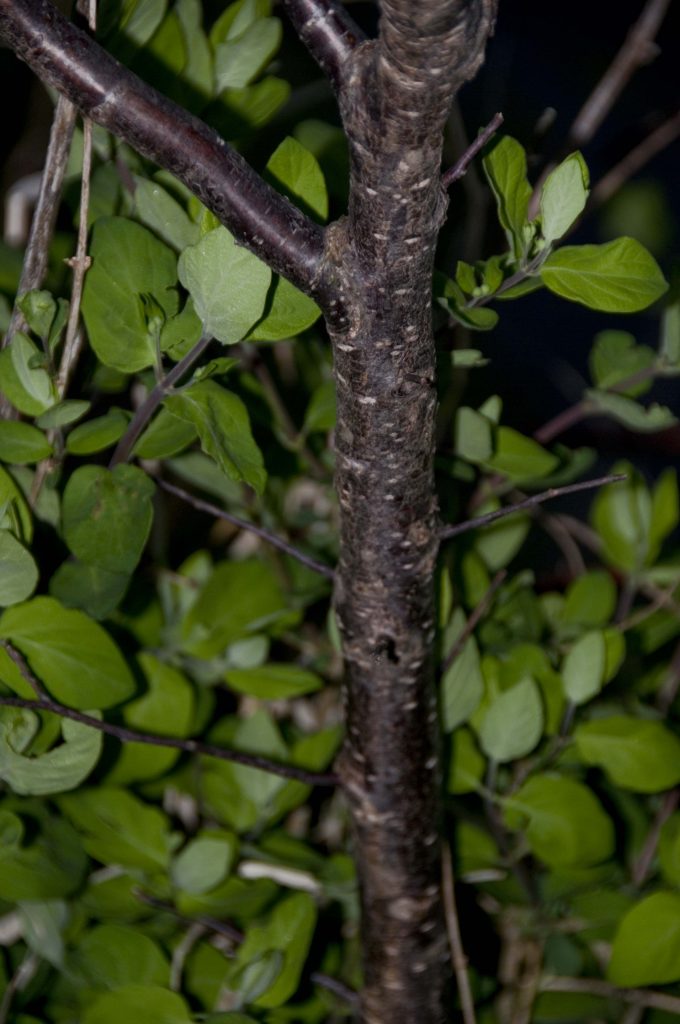common buckthorn
Rhamnus cathartica L.

Description:
Leaves & stems: Ovate or elliptic, with prominent veins curving toward tip. Mostly opposite leaves, 1-2.5” long, with tiny teeth. Leaves remain on plants and stay green into fall. Bark is gray to brown with prominent light-colored lenticels. Cut bark exposes an orange inner cambium layer.
Flowers: Inconspicuous, small and clustered in leaf axils. Fragrant, greenish-yellow, 4-petaled flowers that bloom in spring.
Fruits & seeds: Abundant clusters of round, black, pea-sized fruit. Ripen on female plants in late summer. Dispersed by birds and mammals. Fruits remain on plants into winter after all the leaves have fallen.
Roots: Extensive, black fibrous root system.
Similar species: Glossy buckthorn (Rhamnus frangula; invasive) is similar to common buckthorn. Leaves are mostly opposite, with greater number of veins. Upper surface of leaves are shiny with undersides dull.
Alder buckthorn (Rhamnus alnifolia; native) is under 3’ tall with thornless twigs. Lance-leafed buckthorn (R. lanceolata; native) is less than 6’ tall, found in wet areas and on dry limestone slopes, and has alternate leaves, 2-6” long, gradually tapering to a point at the tip. Carolina buckthorn (R. caroliniana; native), found in the southern Midwest, is 10-30’ tall with toothed, mostly alternate leaves, 2-3” long.
Source: Wisconsin DNR Invasive Species website.
Locations:
Found in woodlands, wetlands and prairies.
Impact:
Common buckthorn has several several serious impacts on your property:
- Creates dense thickets where nothing can grow beneath it.
- Produces a chemical called emodin into the soil from its roots. Emodin suppresses growth of competing plants, negatively impacts insect and amphibian populations, and changes the soil chemistry.
- Serves as host plant for soybean aphids and crown rust fungus.
common buckthorn
For very small patches of very young seedlings; pull, bag and remove.
CHEMICAL:Garlon 4 is the most common chemical used. Most effective when sprayed in 1:1 concentration to cambium layer of cut stumps. Garlon 4 should not be used in temperatures above 80 degrees.
Glyphosate may be used in 1:1 concentration to cambium layer of cut stumps. May be used in temperatures above 75 degrees but is not effective in temperatures below 40 degrees F. Avoid treatment during spring as sap flow is moving in the wrong direction and chemical will not be carried to the roots where it does its work.
BIOLOGICAL:There are currently no effective biological controls for Common buckthorn. While many biological agents have been carefully tested, none were specific enough to buckthorn to be safe for release in the United States.
